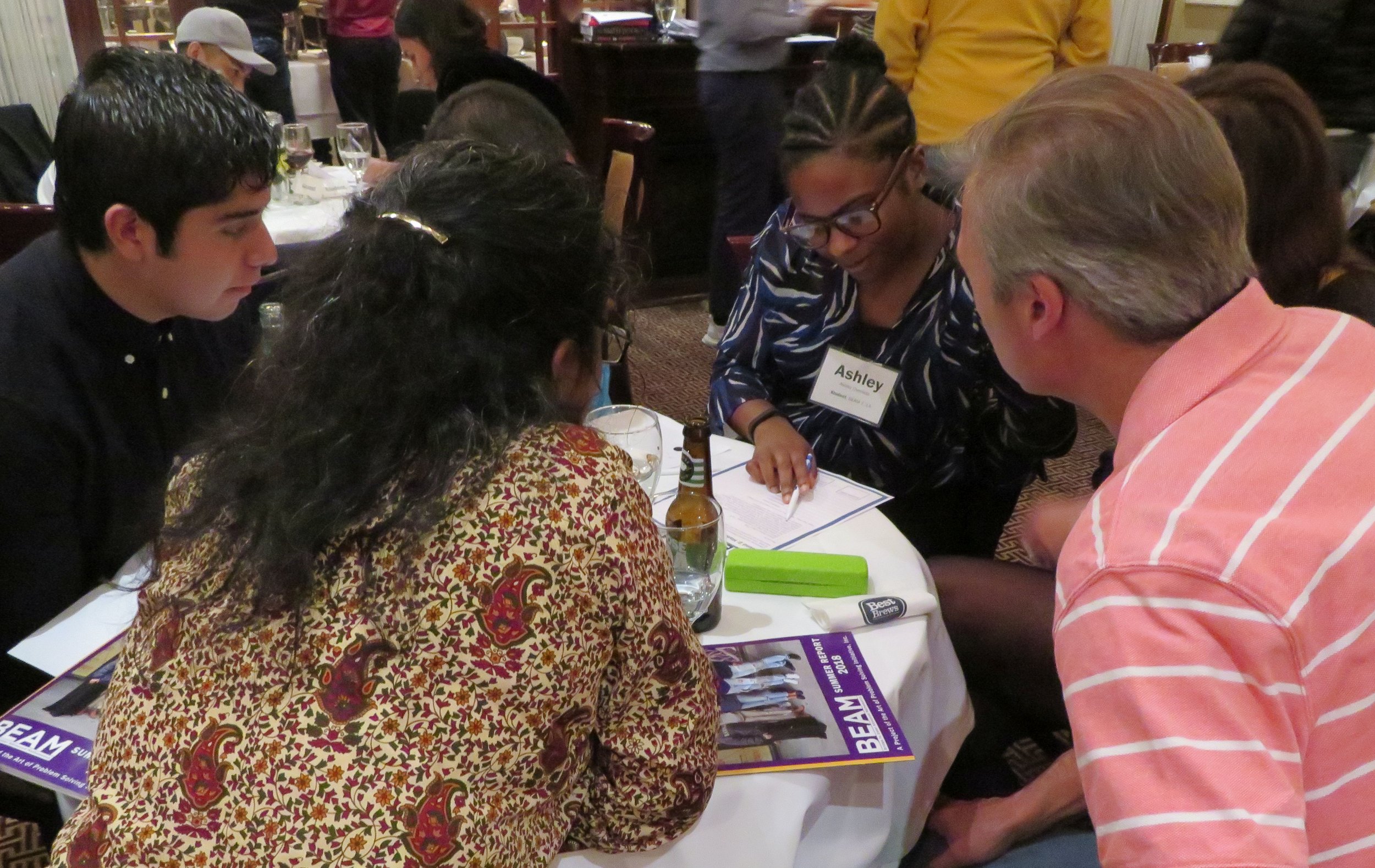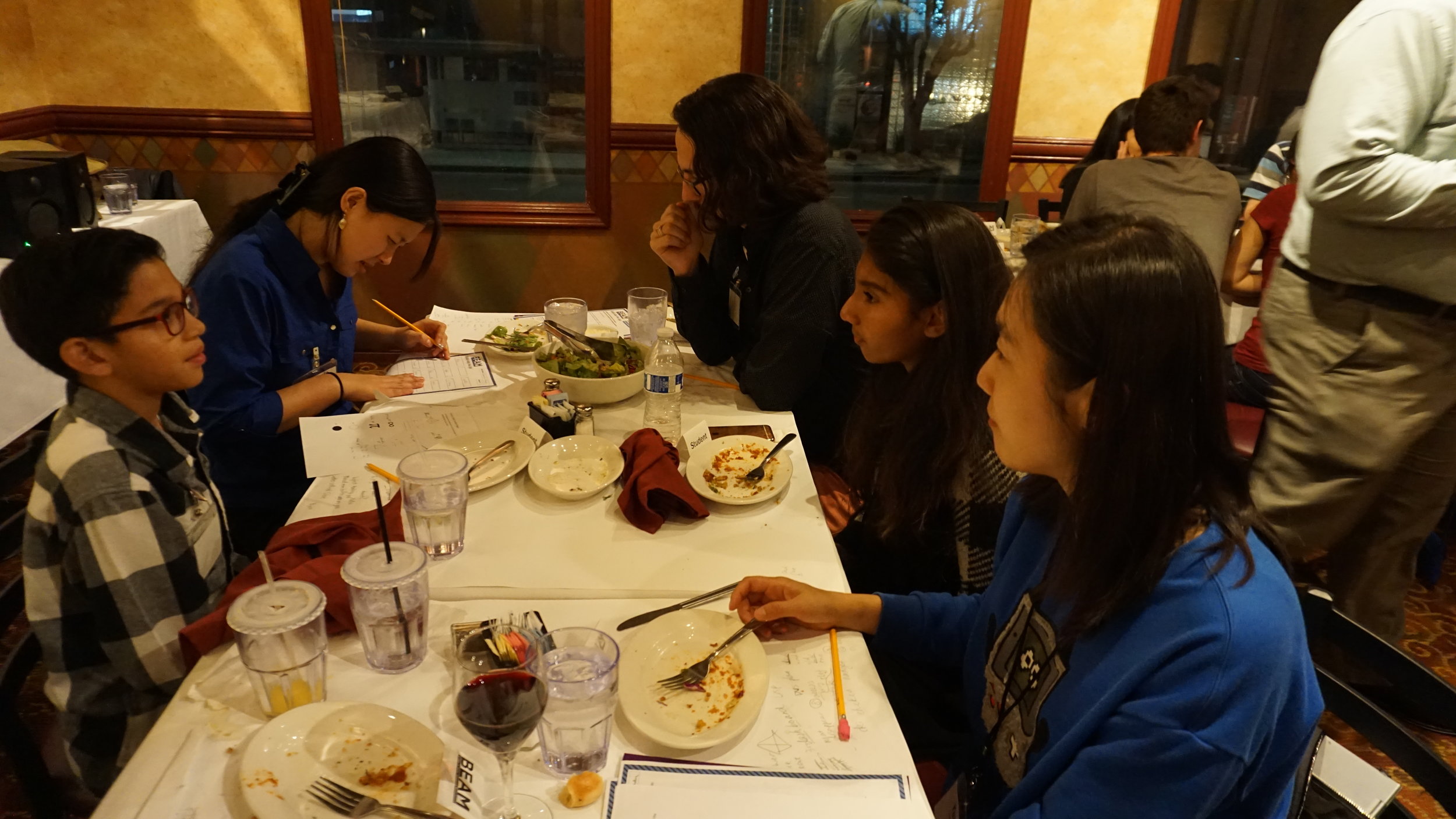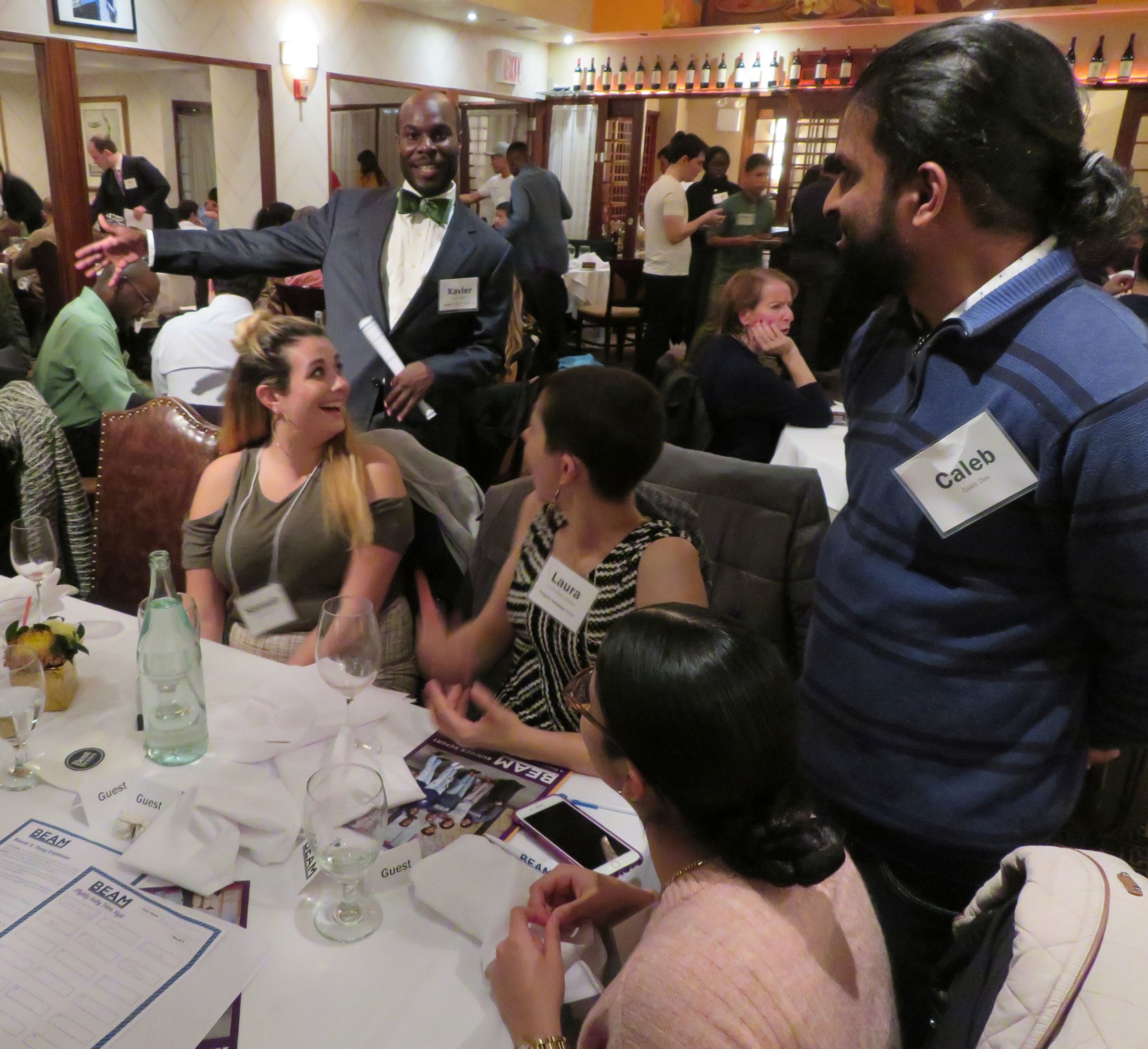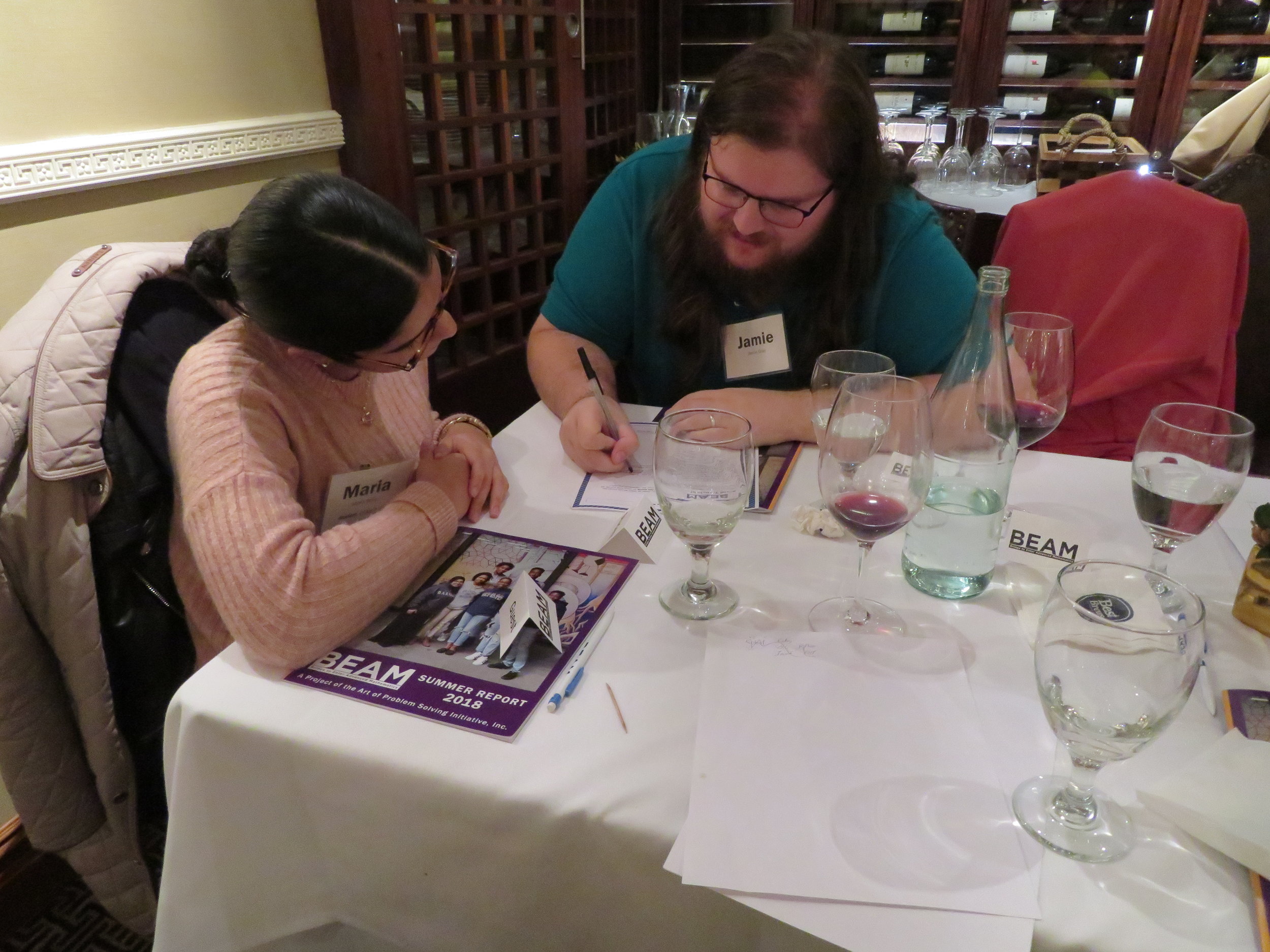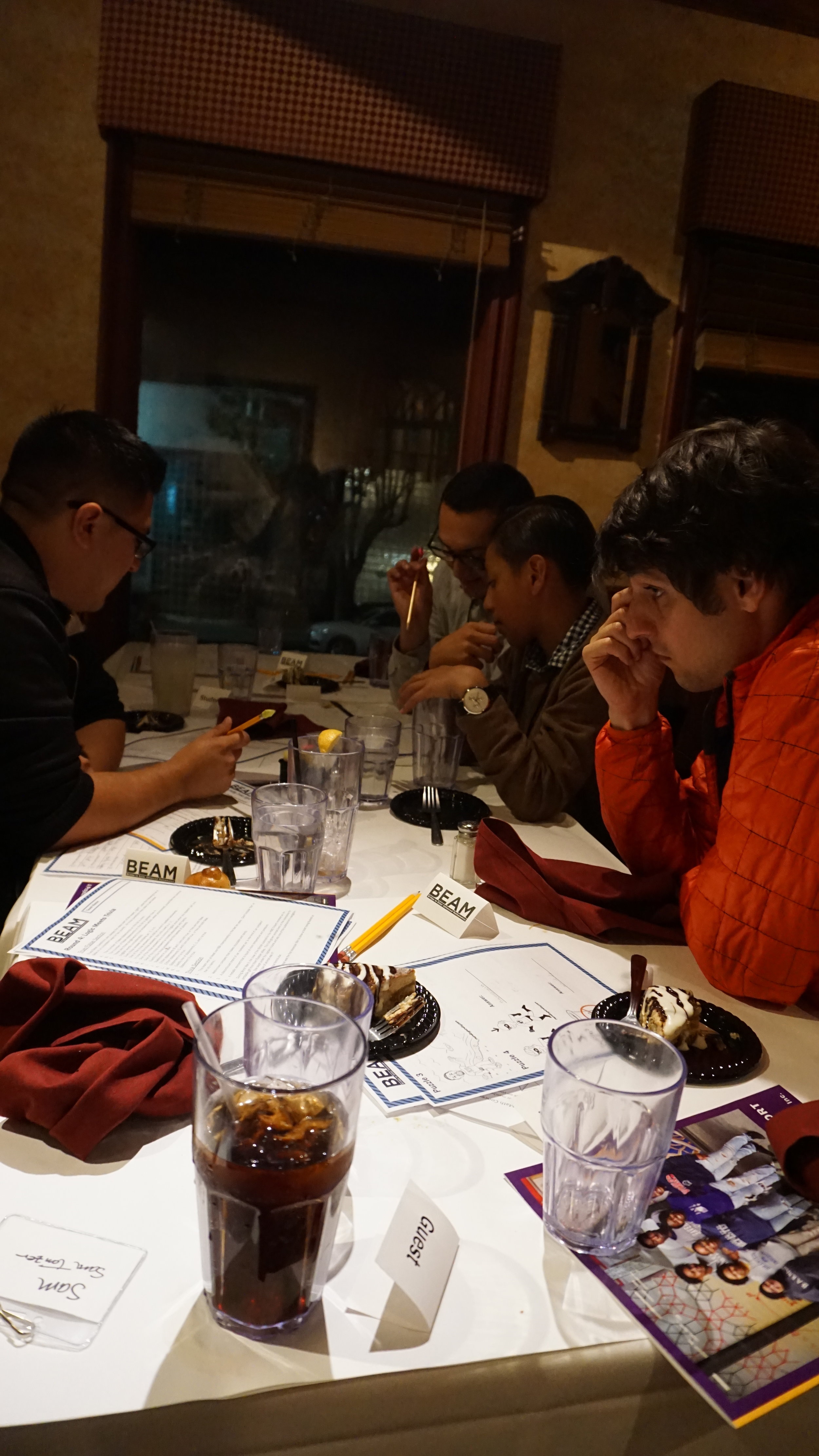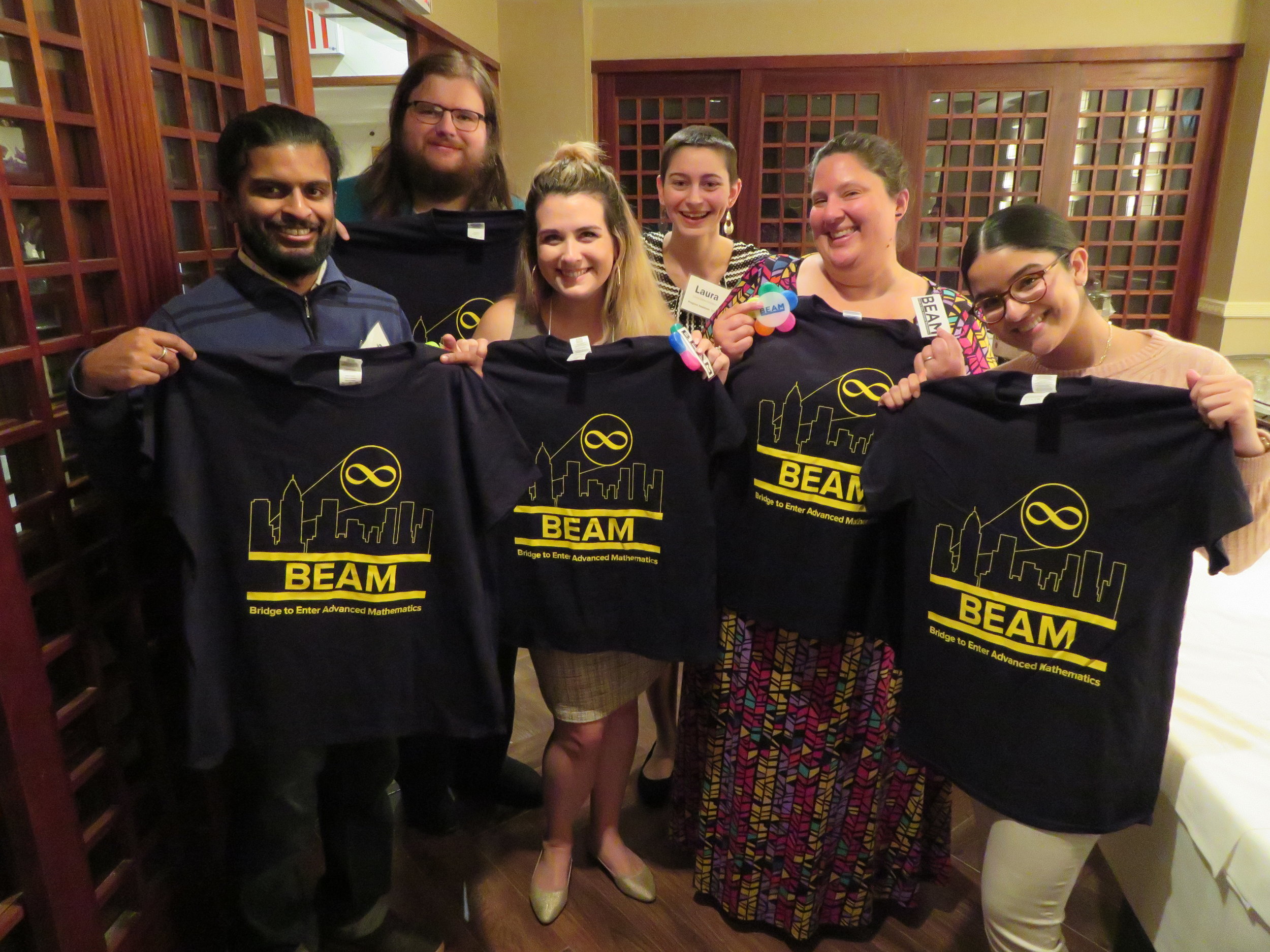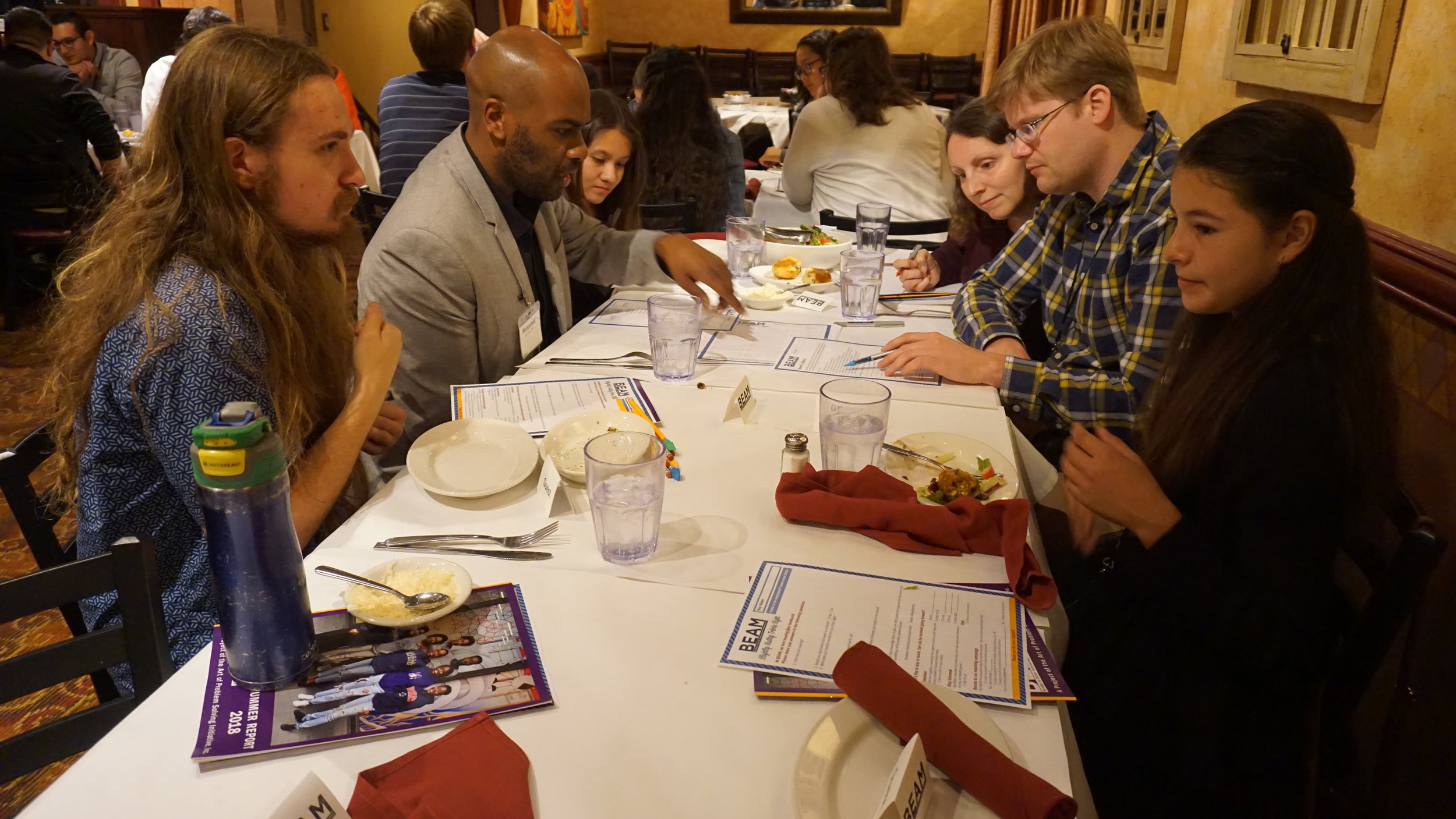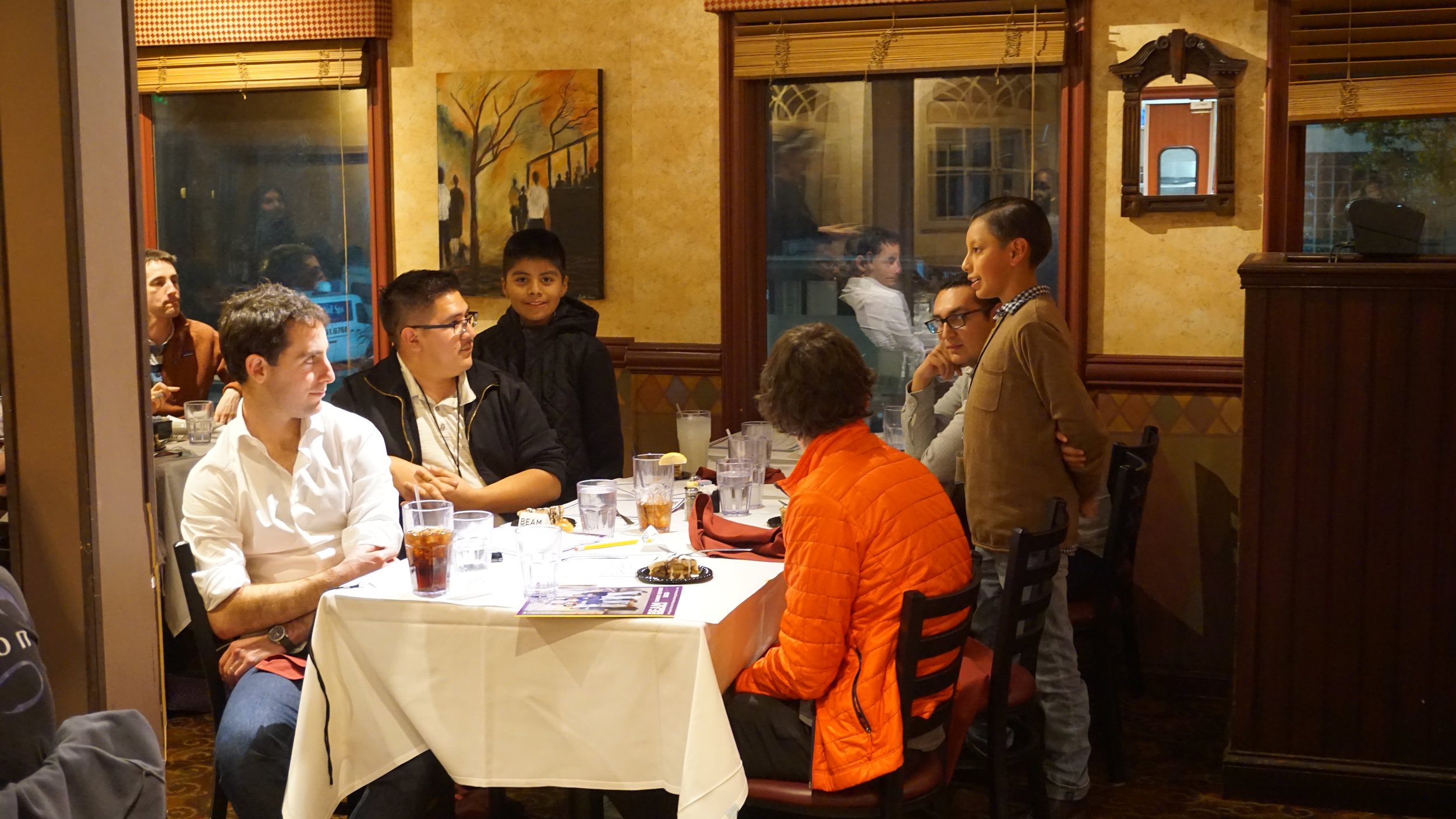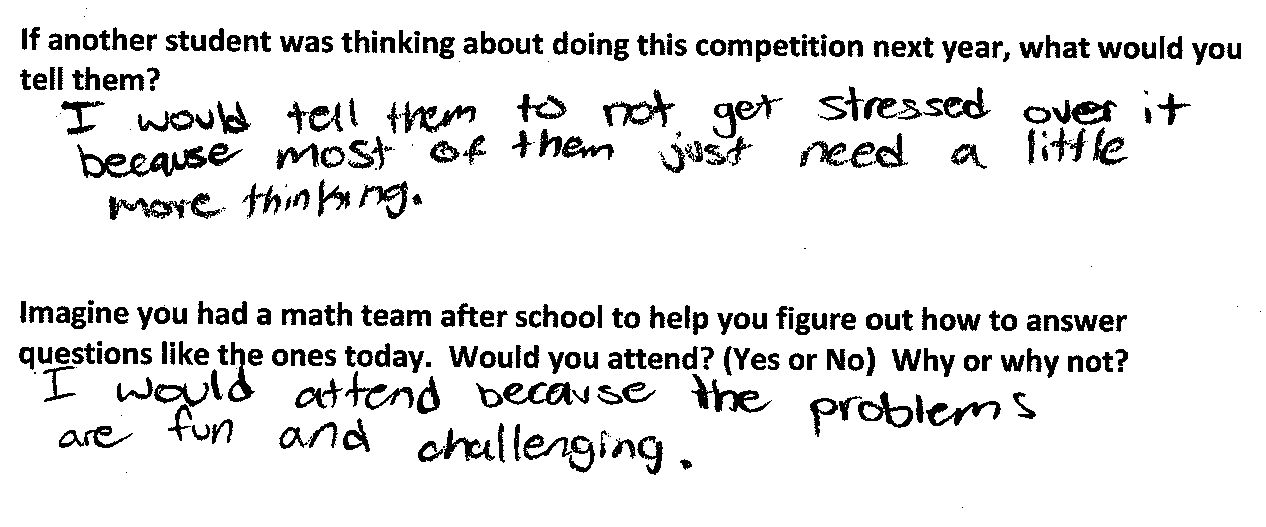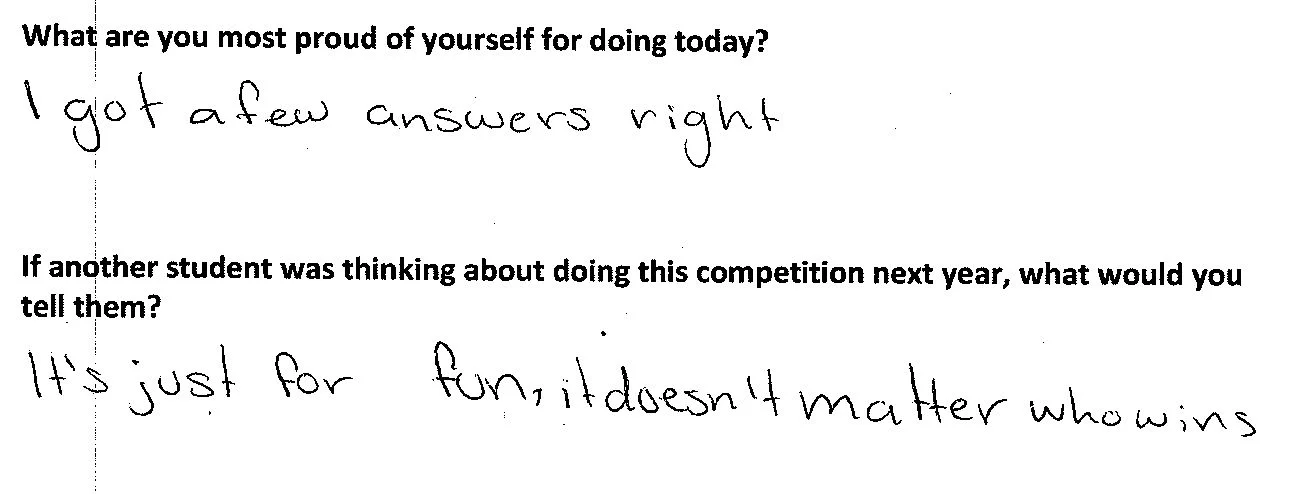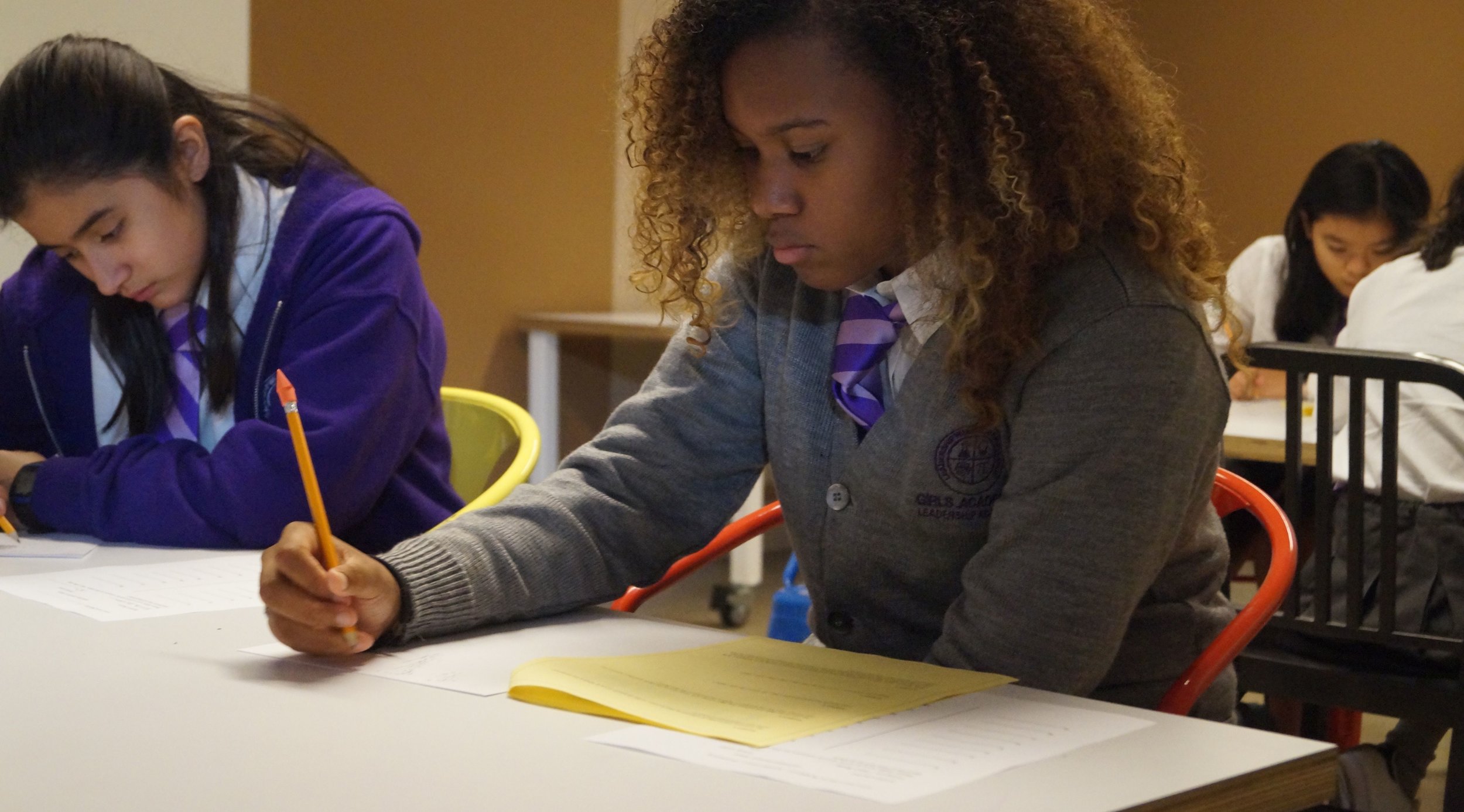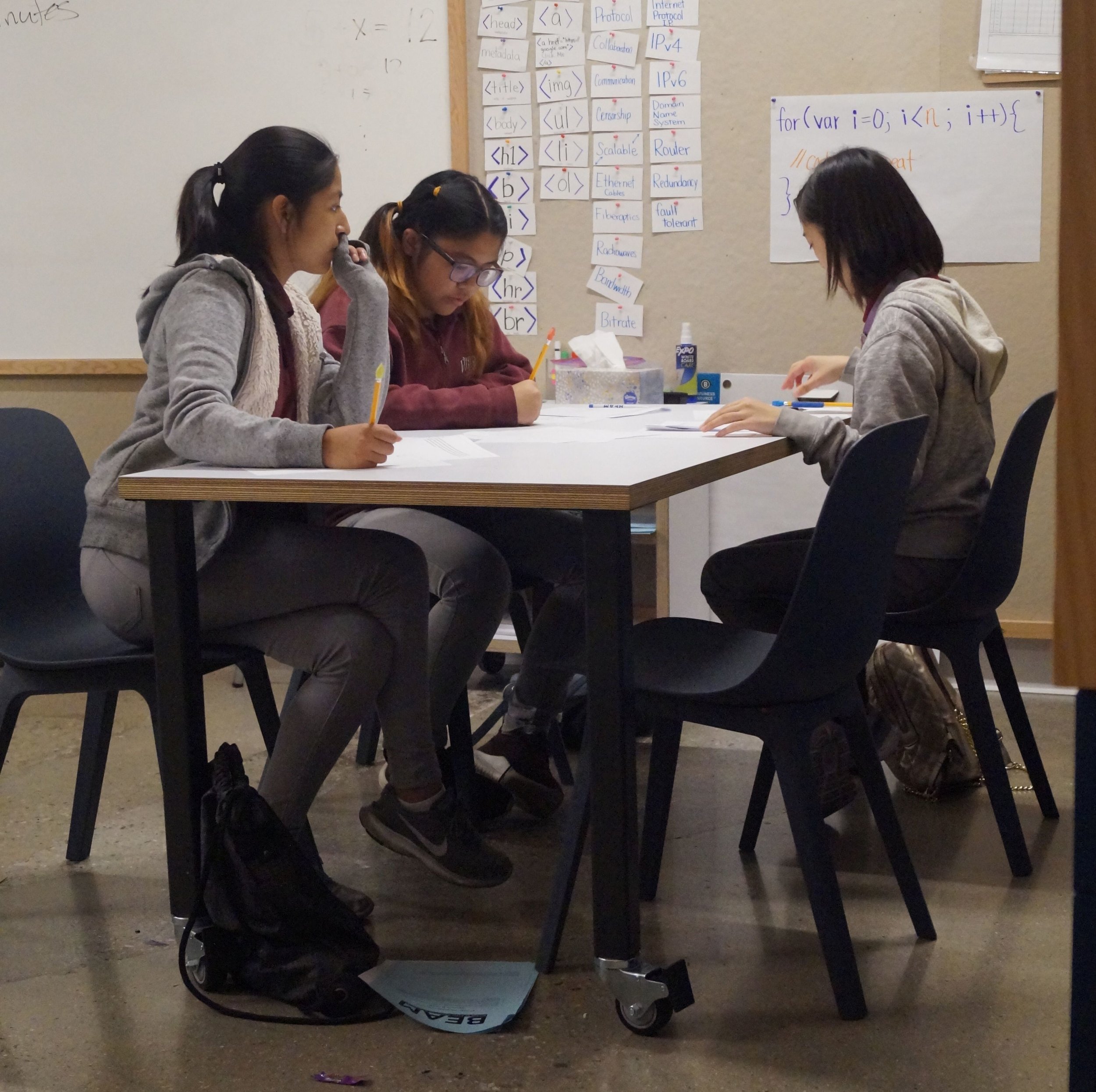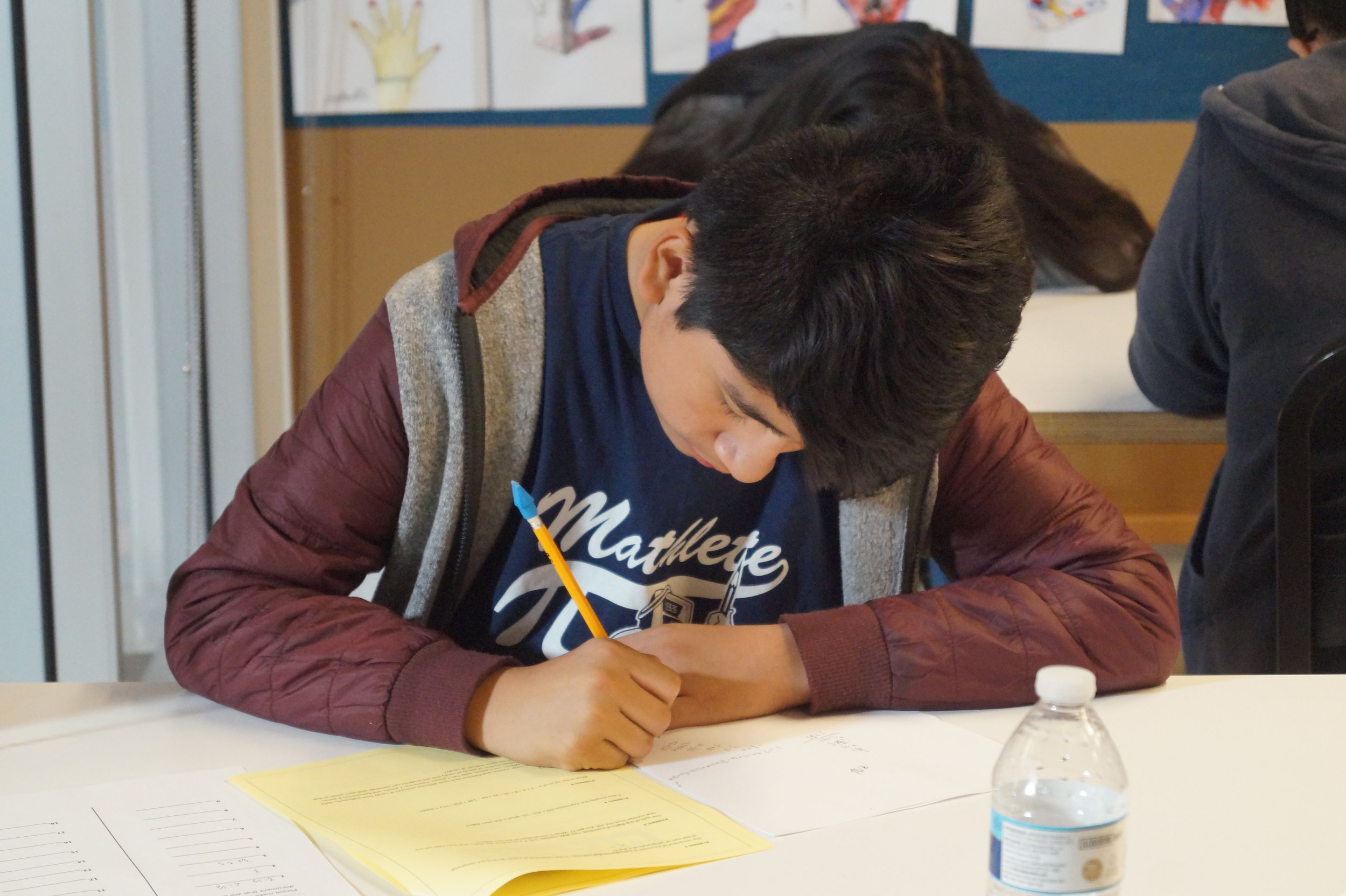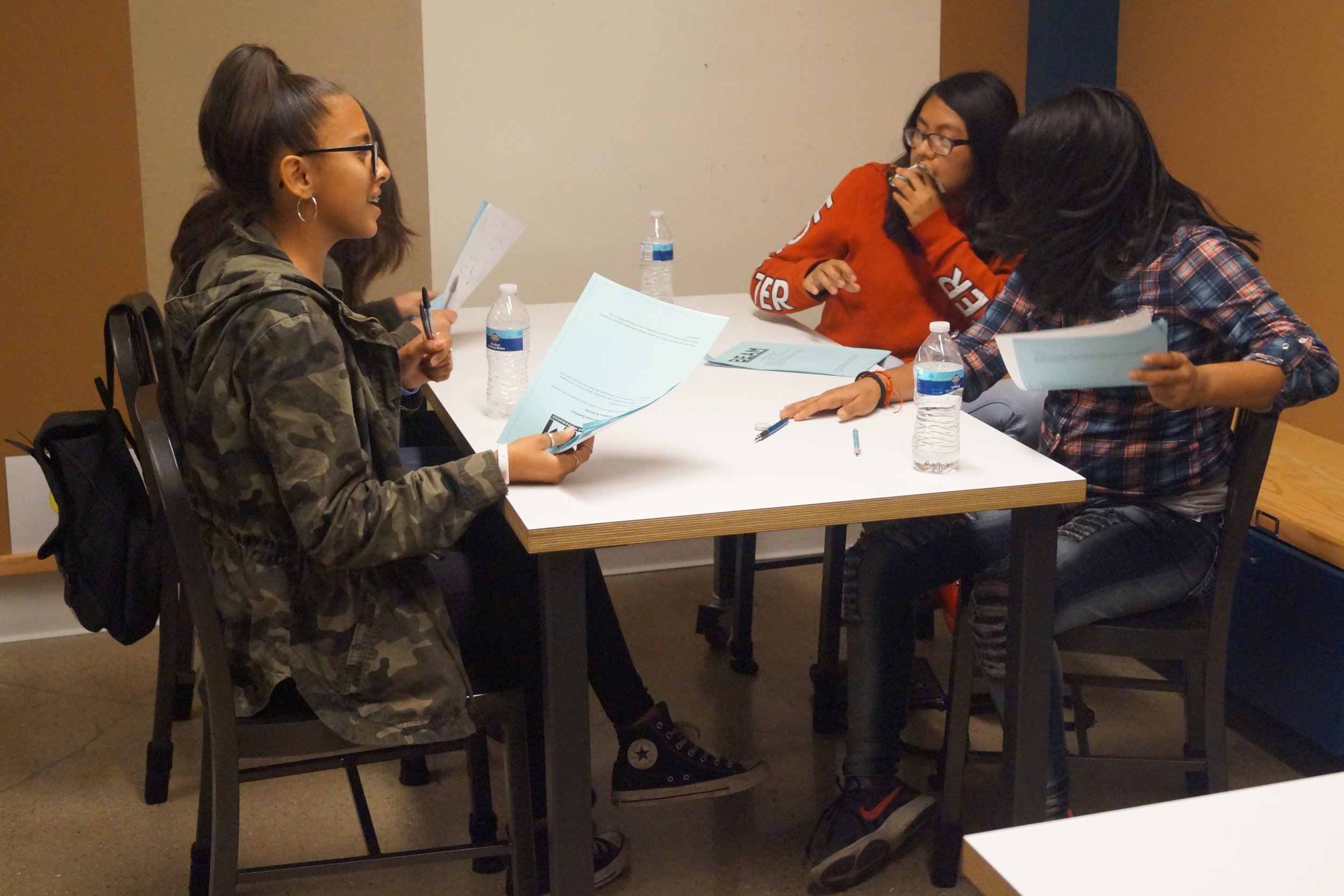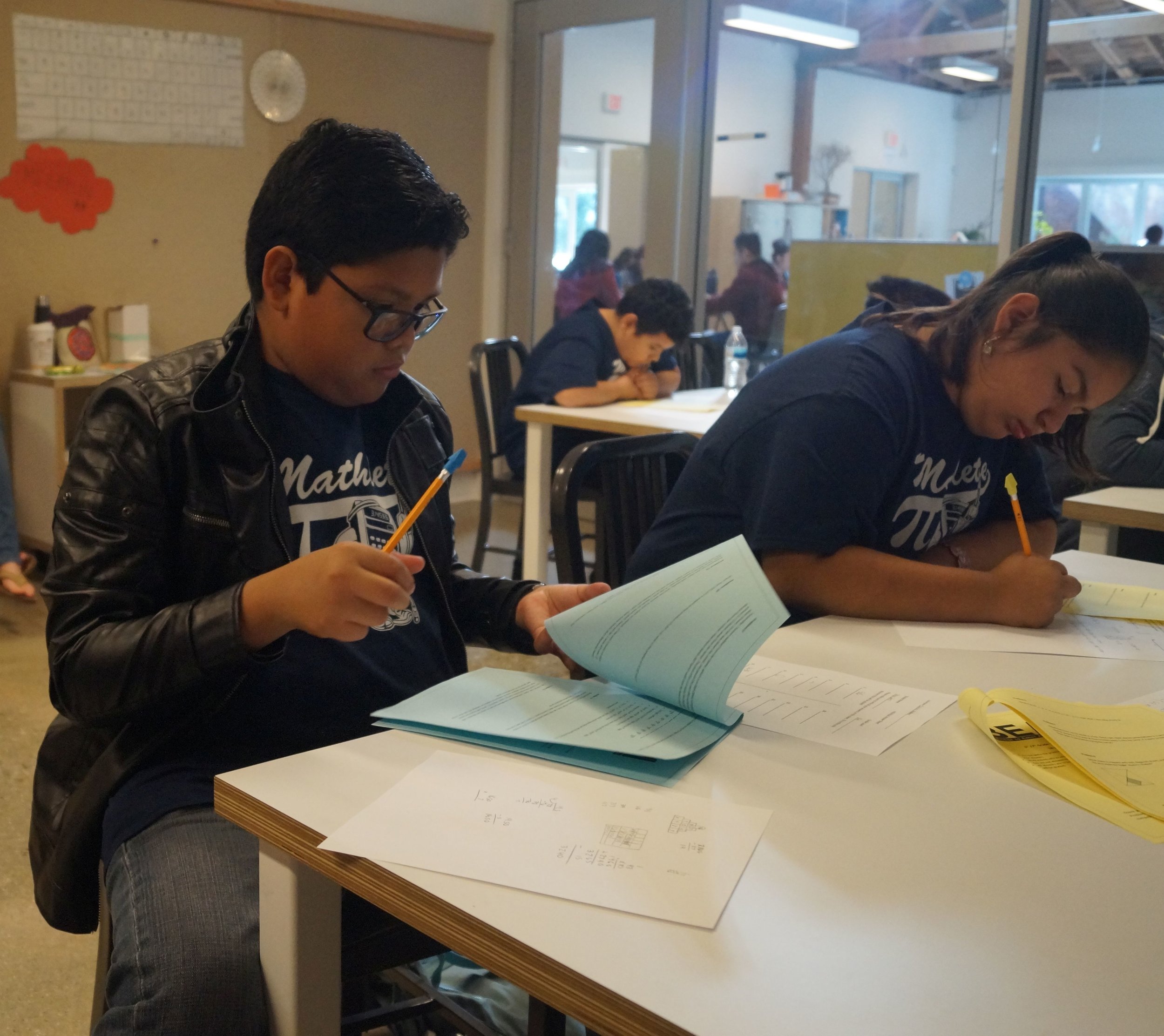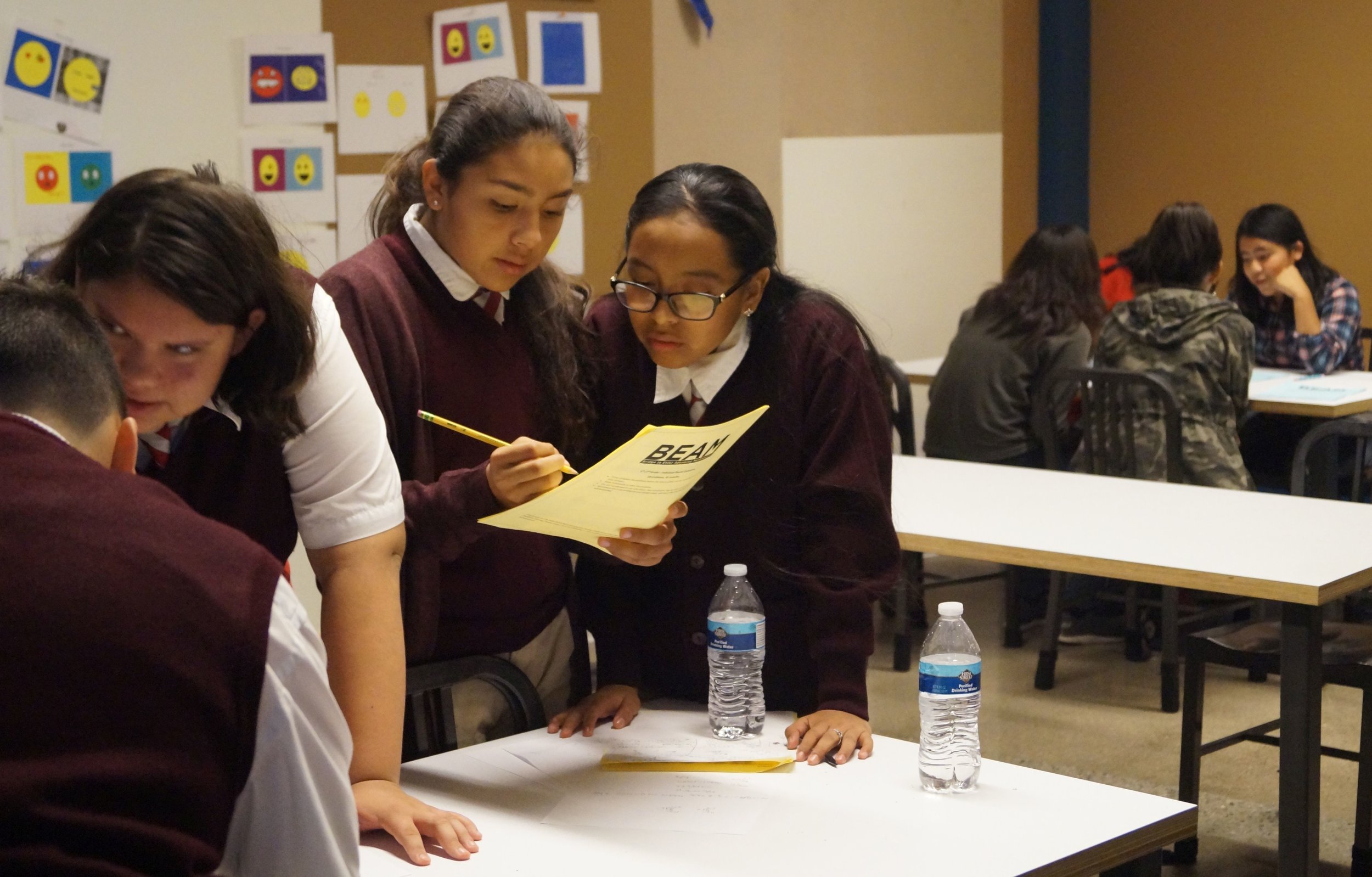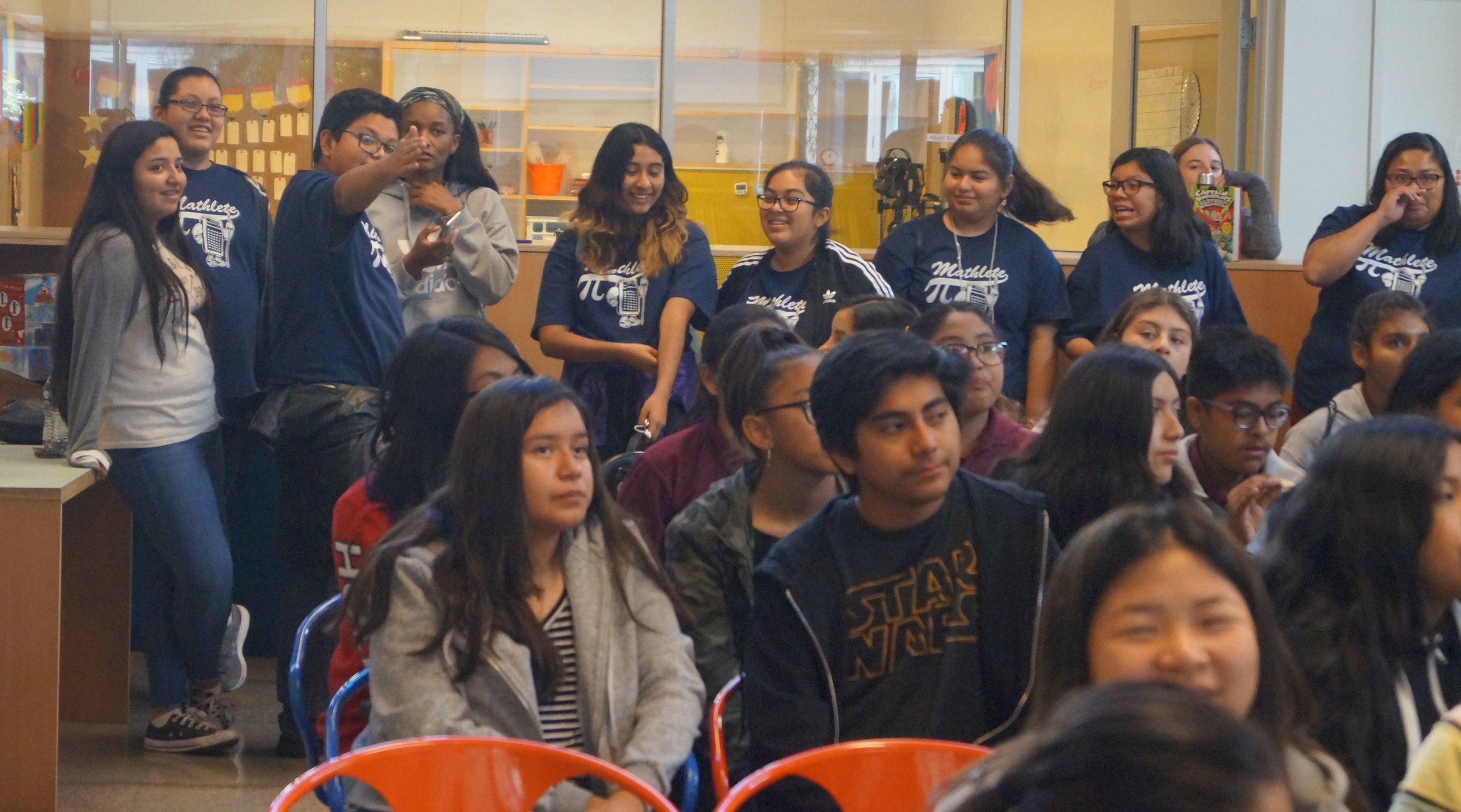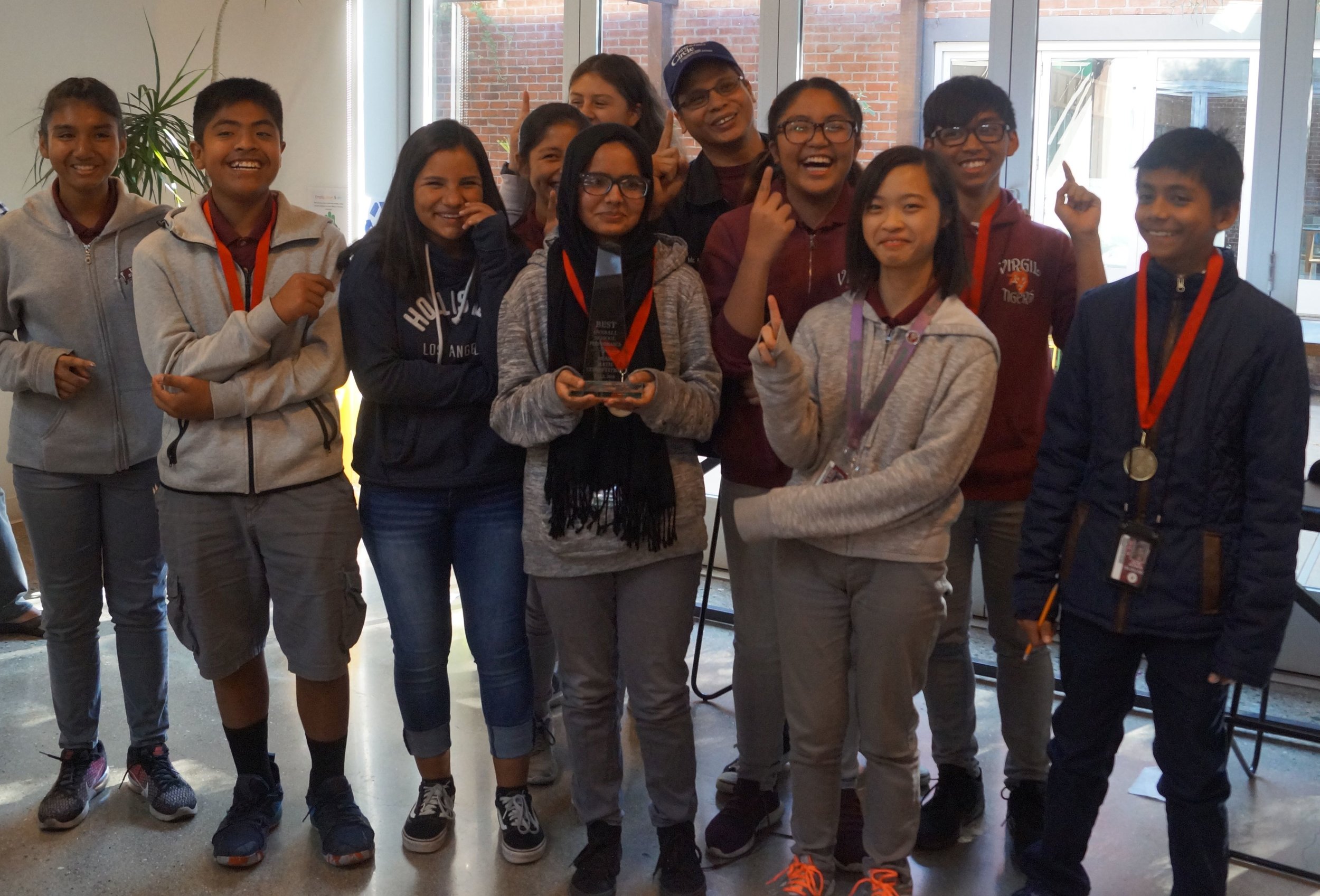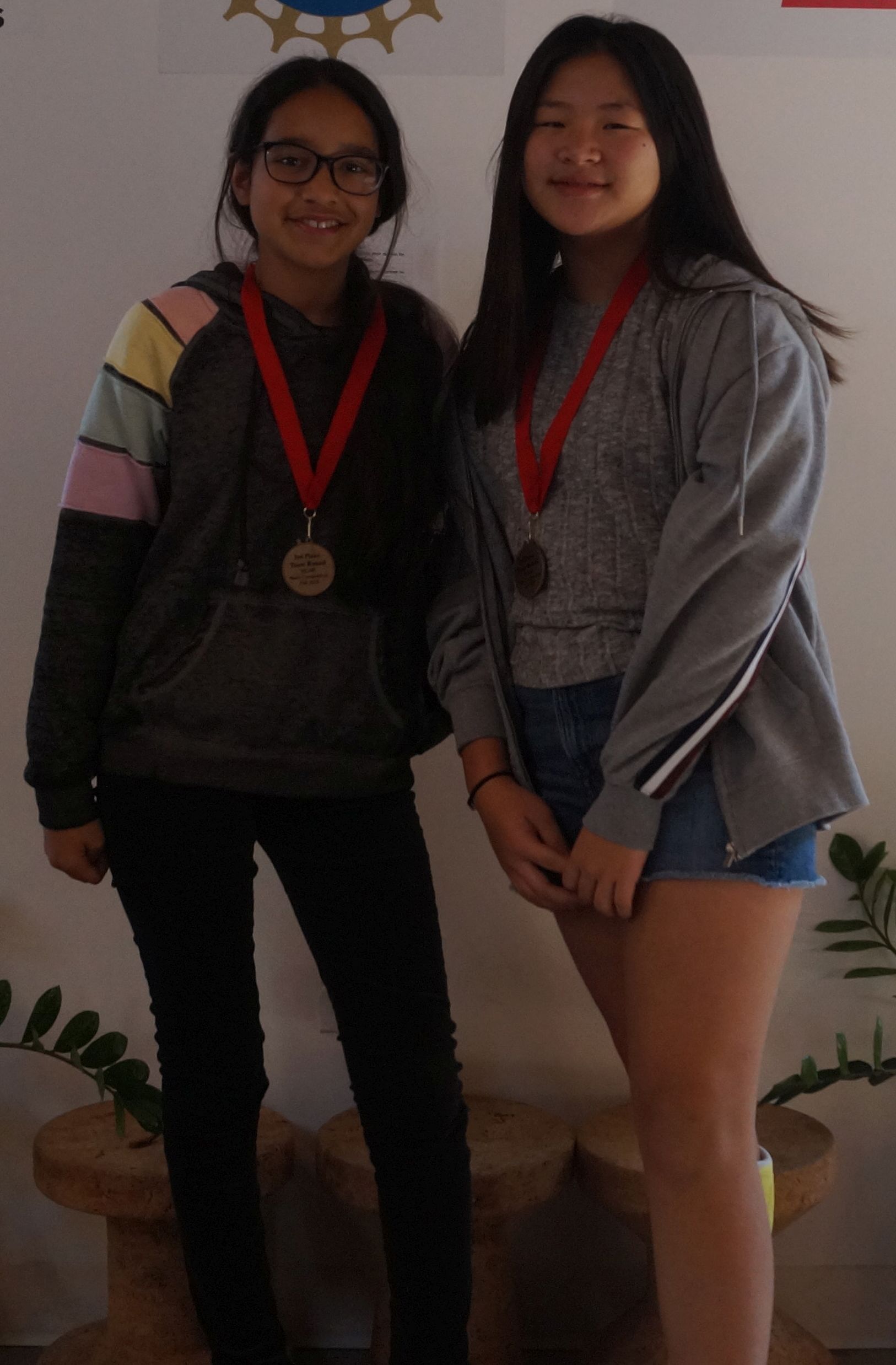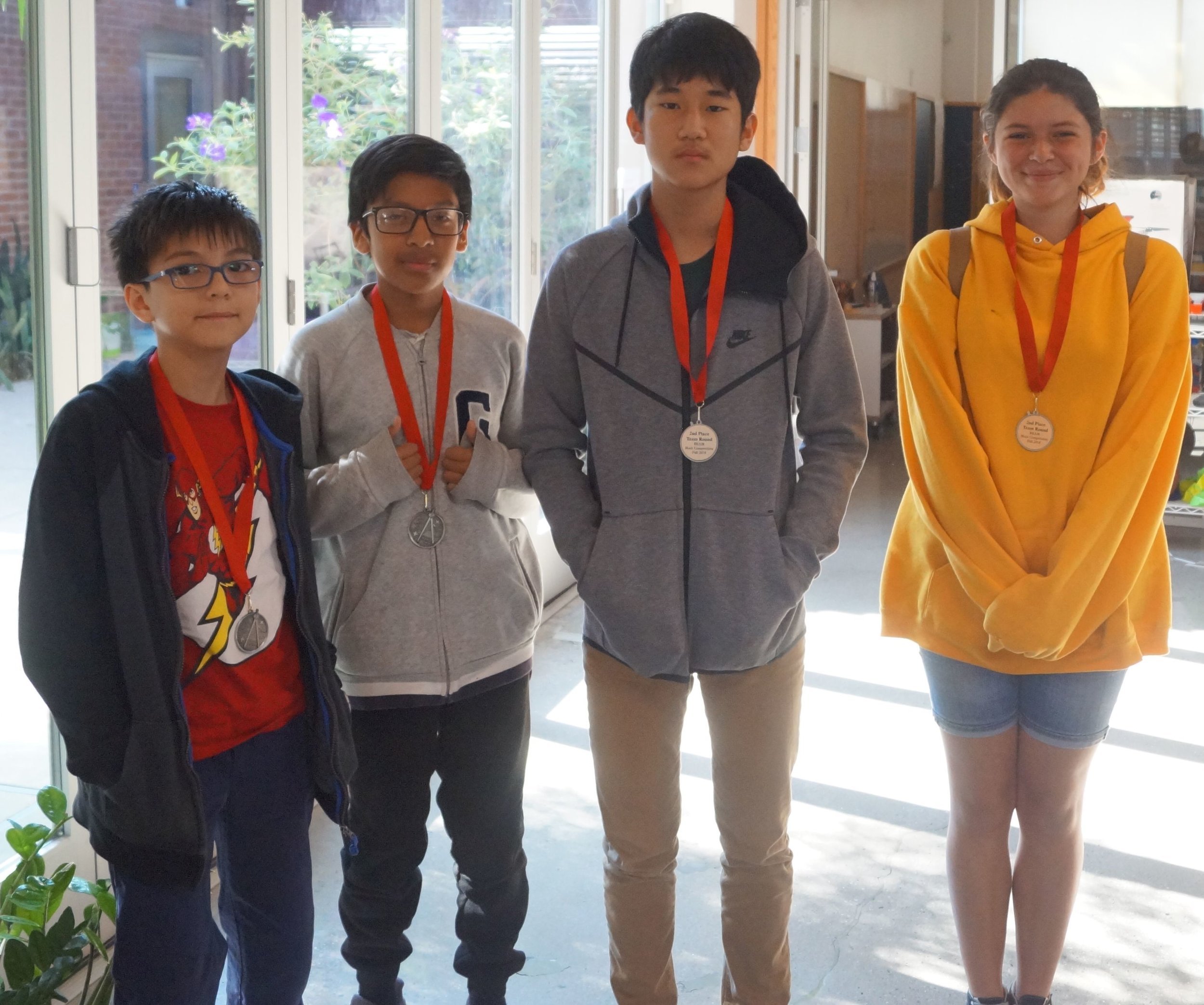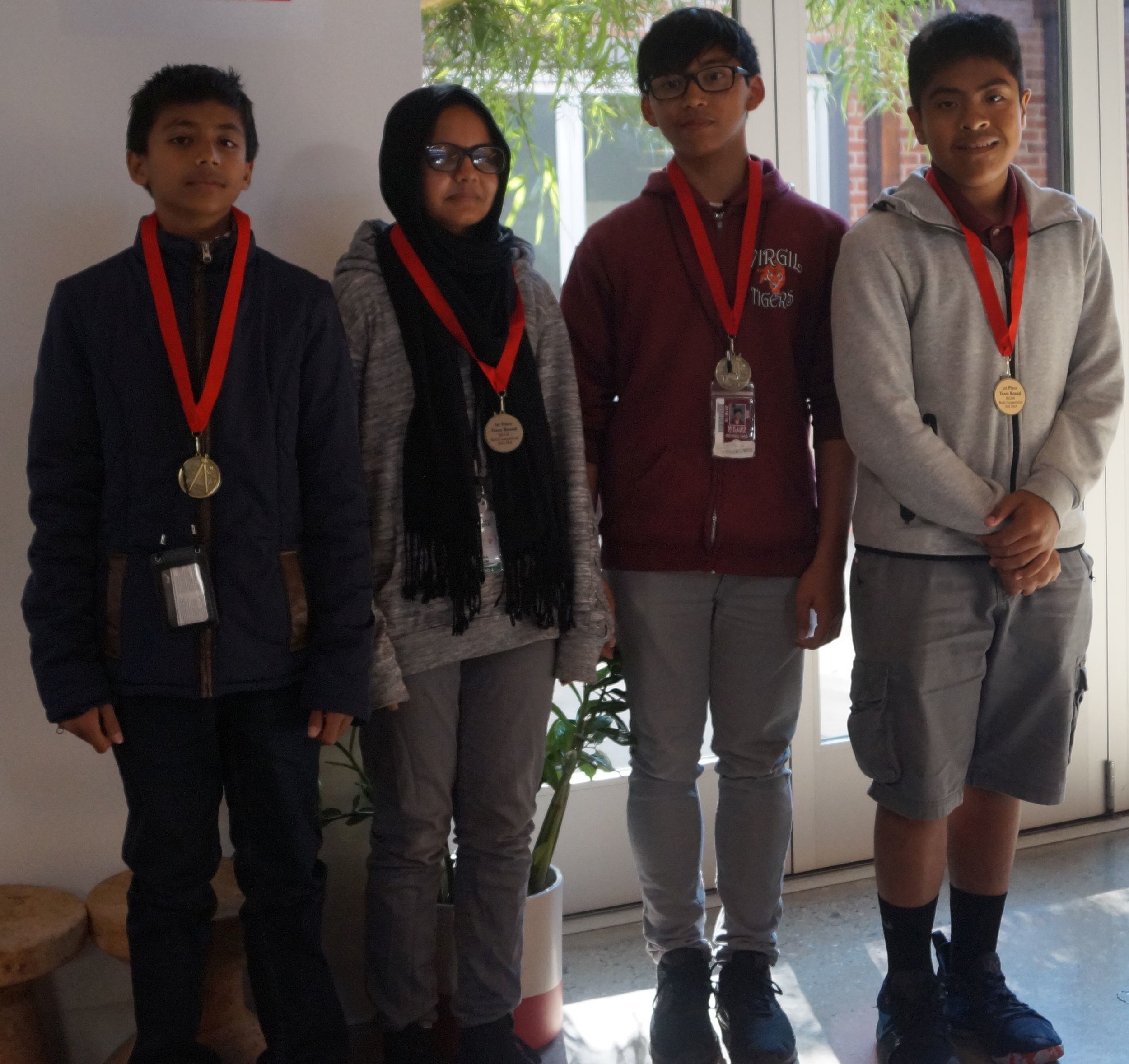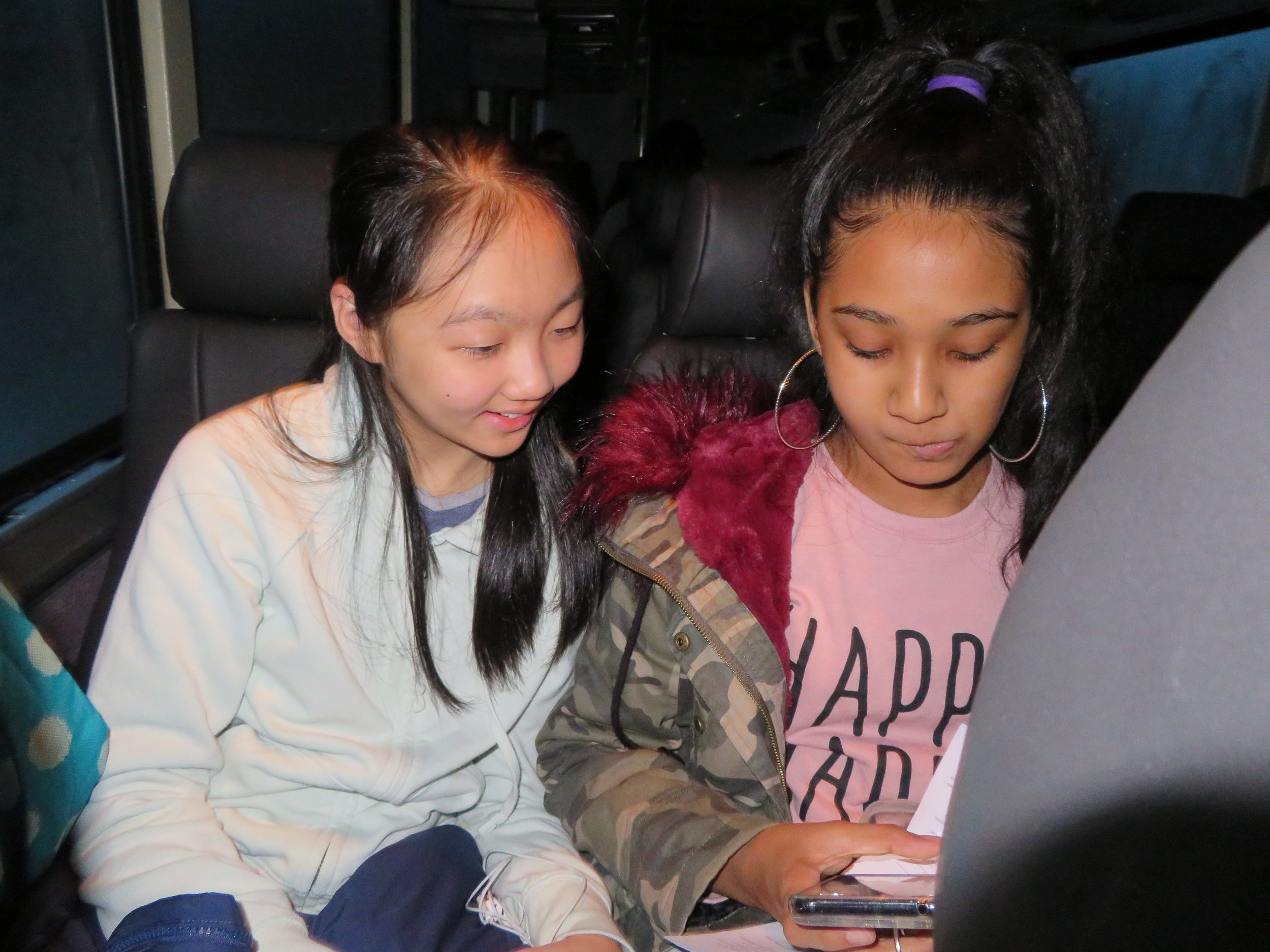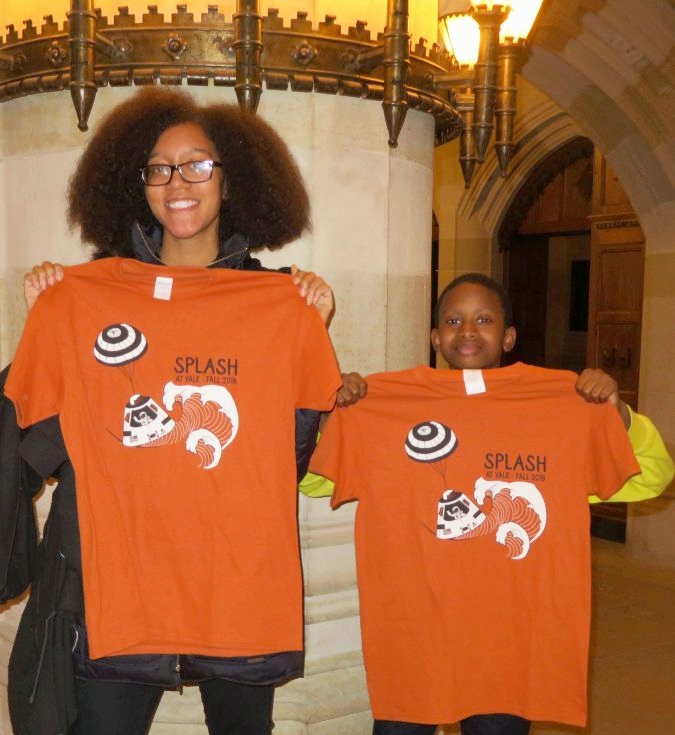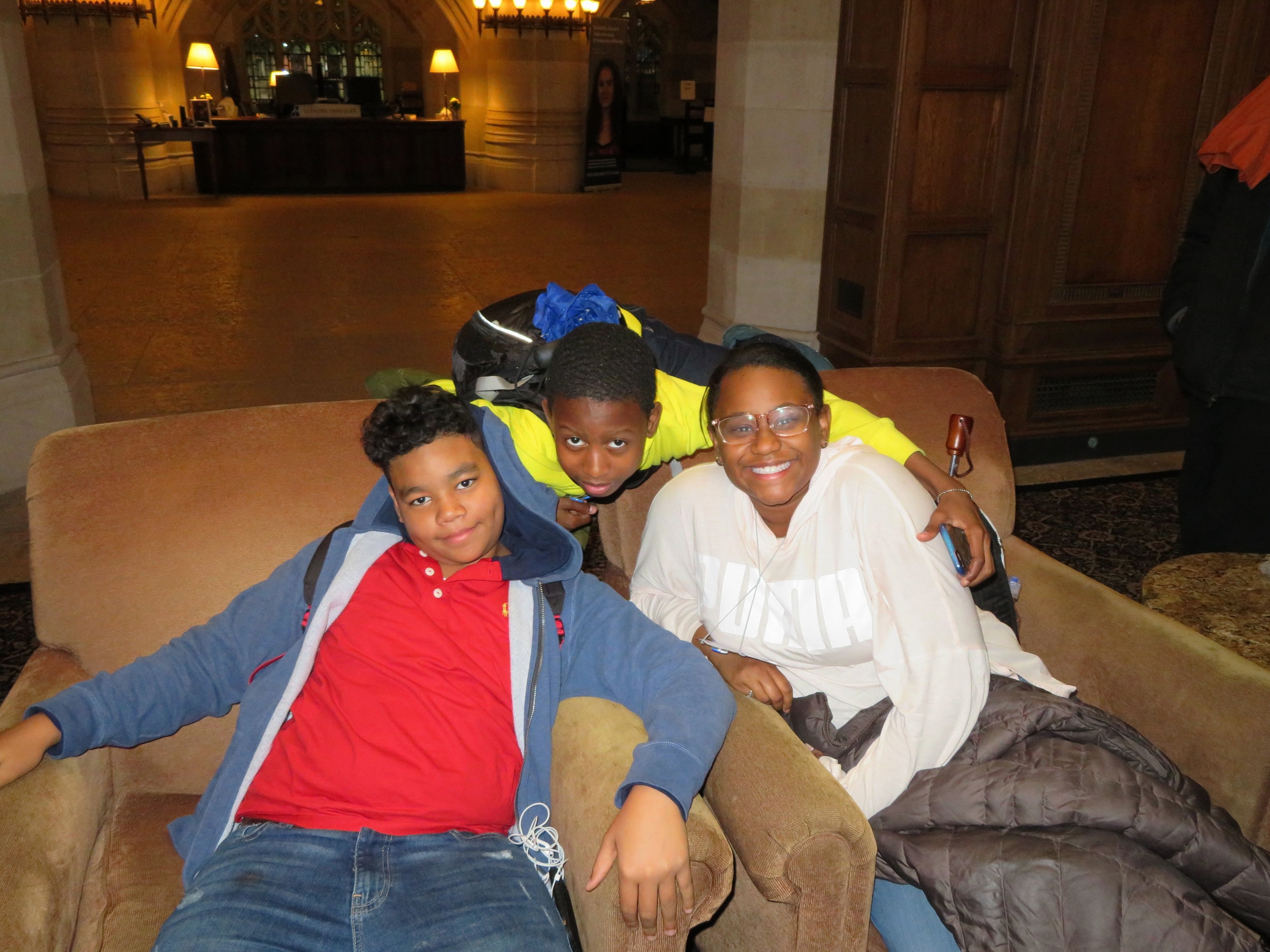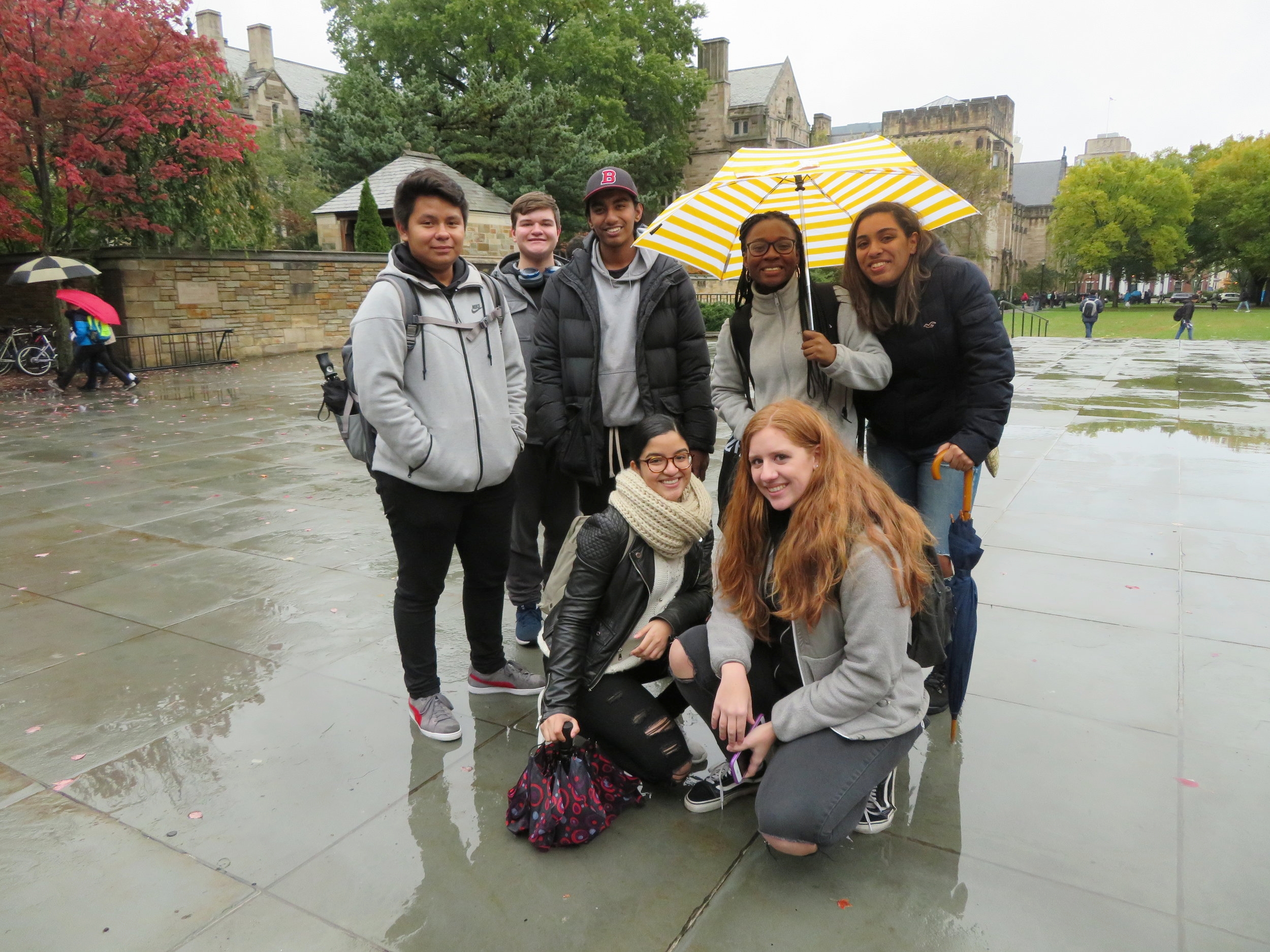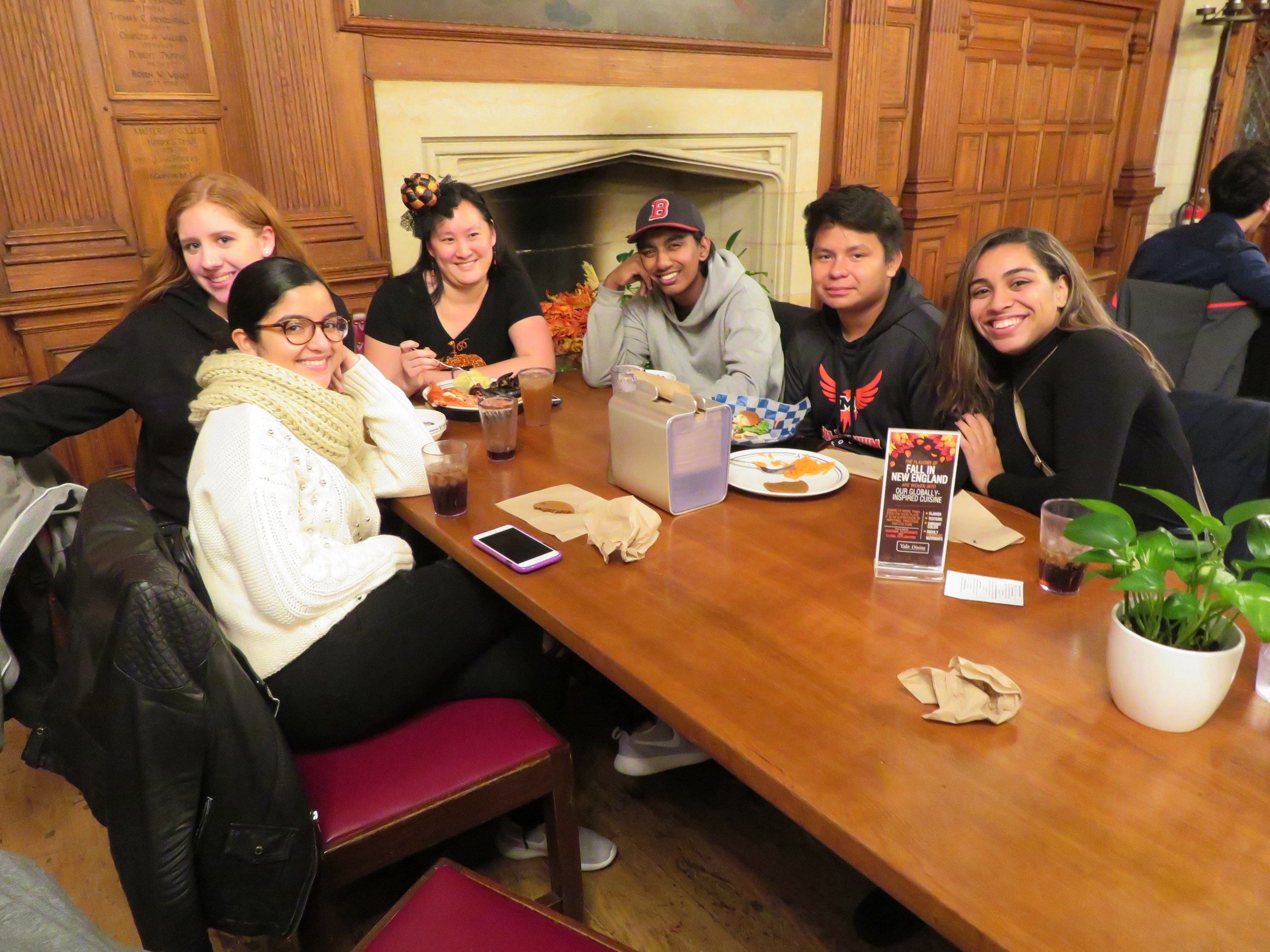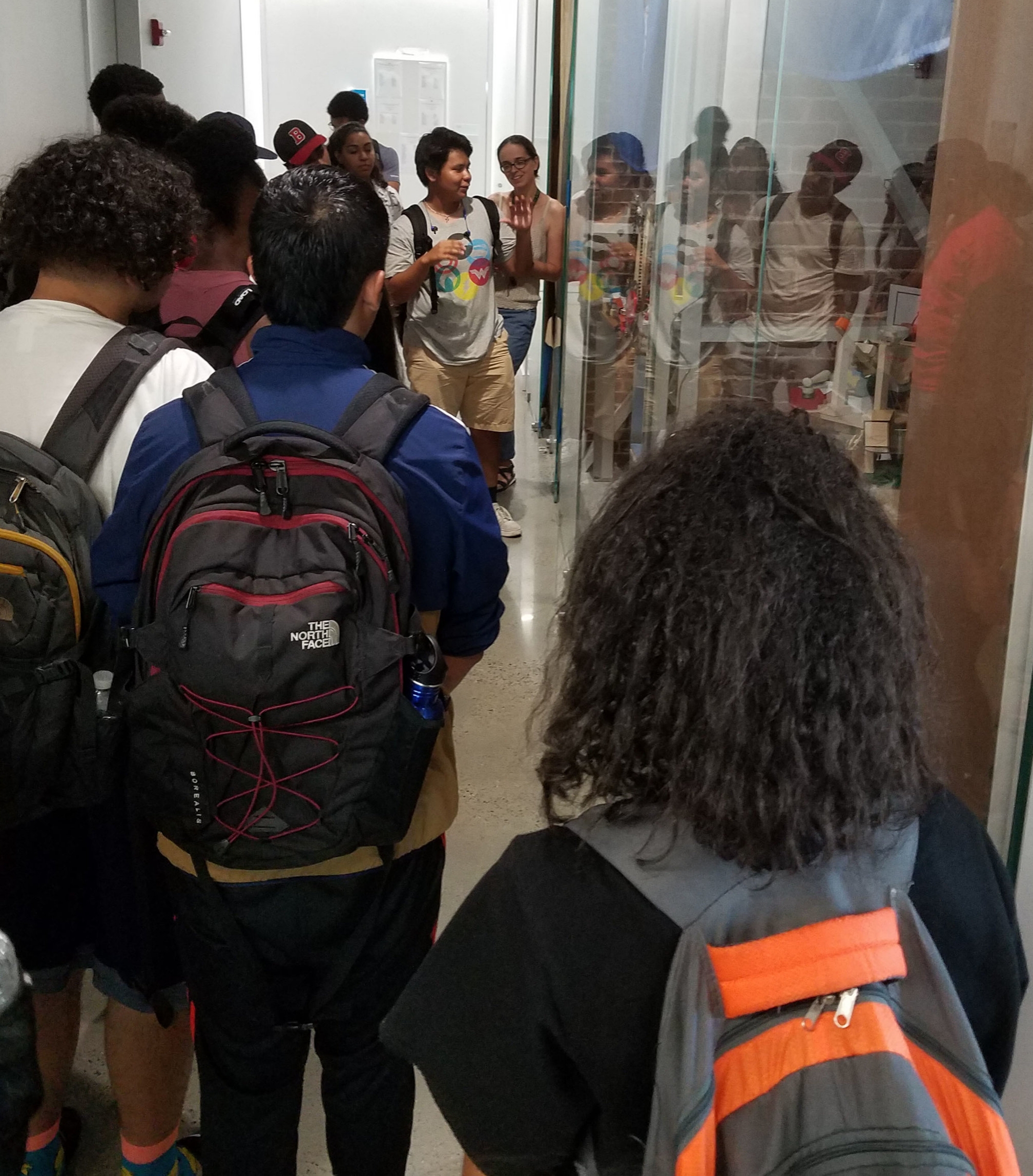In fall 2017, BEAM launched BEAM Next: a program that offers a range of prep and enrichment classes to students from grades 8 to 11 (we’re adding 12th grade opportunities next year!). Nearly every Saturday, students gather at Courant Institute*, the mathematics building on New York University’s Campus, to engage in classes catered to their interests in STEM. The year has been broken into three trimesters featuring different courses. A students day typically consists of two blocks of class and lunch. The morning classes, Things You Need to Know (TYNTK), are centered around the crucial topics students need to learn based on their grades.
8th grade students Yilin and Caroline team up for a combining like terms game in their Algebra class.
The topics grow as BEAM students grow. TYNTK covers:
8th grade: SHSAT prep (fall) and Algebra 1 (winter, spring)
9th grade & 10th grade: How to survive high school, a two-year sequence that covers everything from studying to outlining an essay to email management to calendars and organization
11th grade: SAT/ACT prep (fall, winter) and college admissions support (spring)
12th grade: college admissions support (fall, winter) and getting ready for college (spring)
Starting left, Zeina, Maryam, and Bryan walk through a problem with help from the Supplemental Algebra instructor Barbara.
Right now, 8th grade students enrolled in Saturday classes are taking either a Supplemental Algebra or Fast Paced Algebra course in order to ensure they have success on the Algebra 1 Regents in June, which opens the door to future math courses (especially Calculus!). Our Algebra classes are designed to help build a deeper understanding of the content and build on what is taught in their school’s curriculum. One student, Yilin says that “algebra class has helped reinforce a lot of past knowledge and has also helped to advance the foundation of important math skills”. The class isn’t meant to accelerate their learning but to add depth towards the material they already know. Algebra at BEAM gives students the opportunity to expand their problem solving skills and brings a fun challenge towards topics that they may have already learned.
After students leave Algebra, they scatter to their enrichment courses. Current offerings including computer programming in Python, graph theory, and evolution. We’ll share more about enrichment in a future week!
*We would like to thank the Courant Institute, the Center for Mathematical Talent, and New York University for the use of their classrooms, which are generously provided to BEAM at no cost.

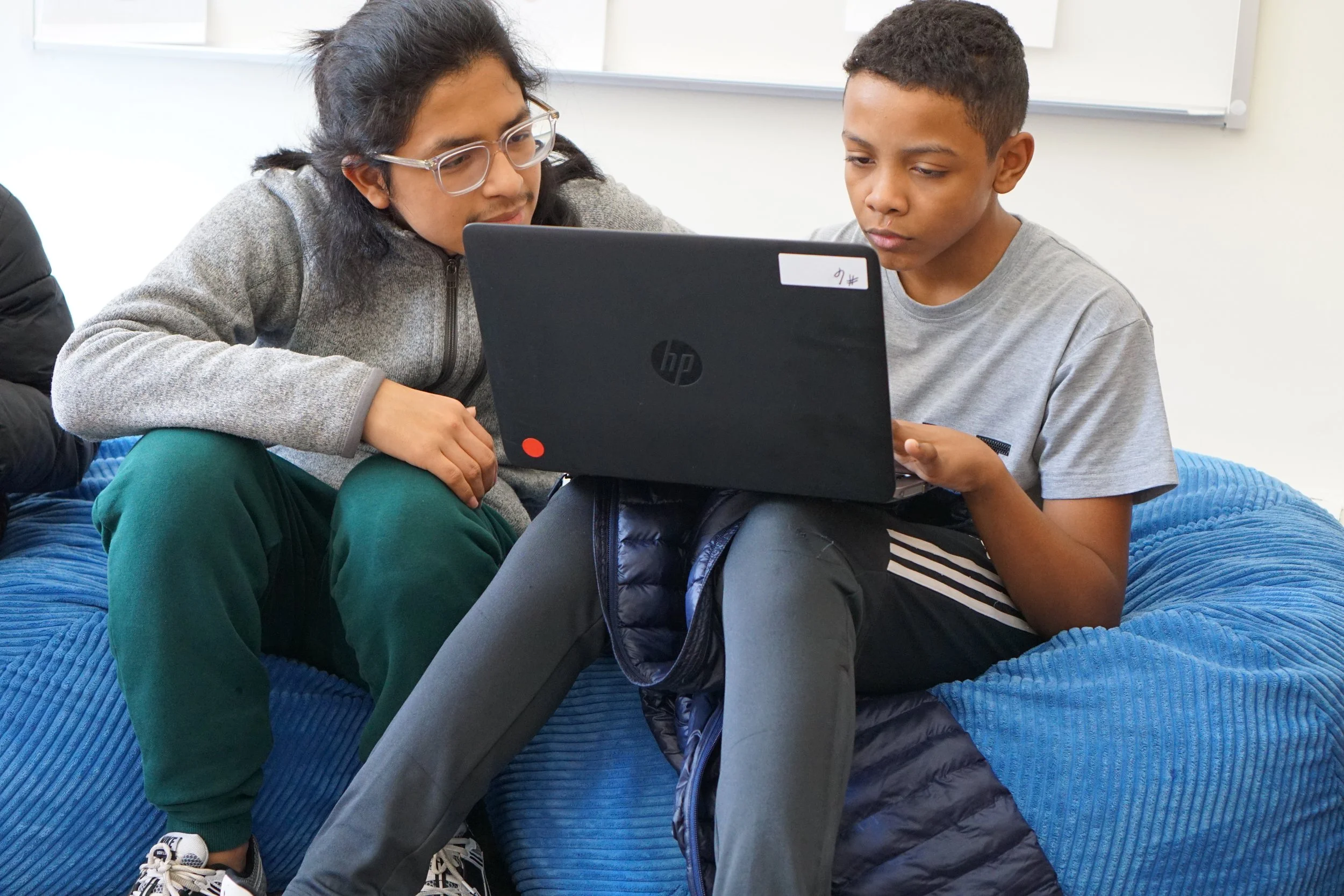



![Emely, 7th grade: I learned to play Splendor.Ethan, 7th grade: Because of you, I made new experiences. [drawn with cards from a Set deck]Mohammad, 7th grade: I learned Binary. 01010100011010000110000101101110011010110111001 --> "Thanks" in Binary…](https://images.squarespace-cdn.com/content/v1/561a6eede4b0448989c88951/1545427851203-FHHALG6GIBIGJ6DNK9IS/IMG_0353.JPG)












